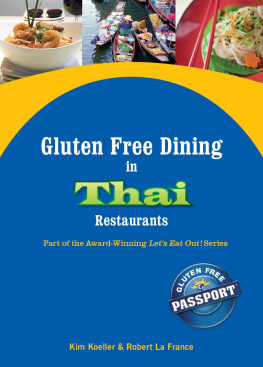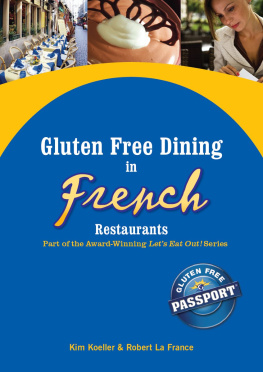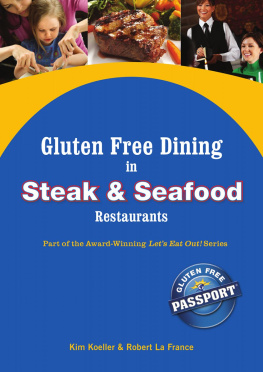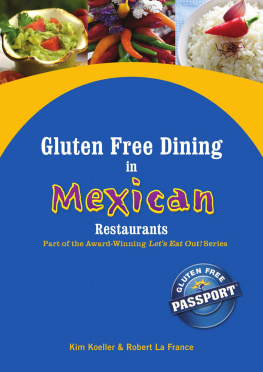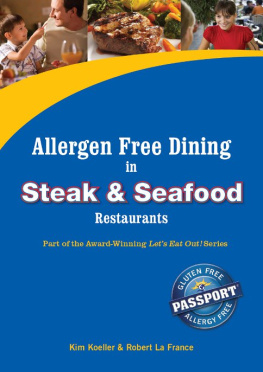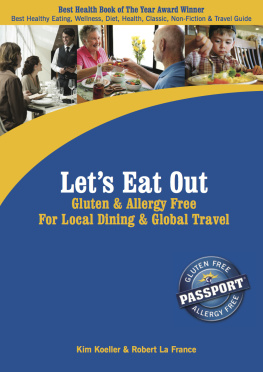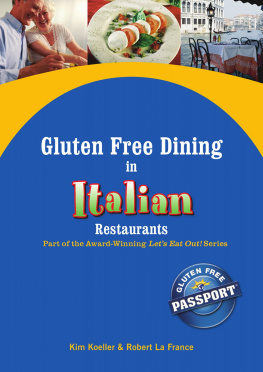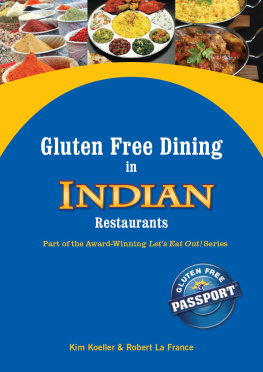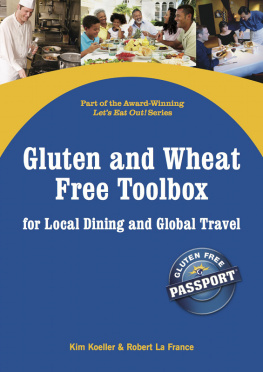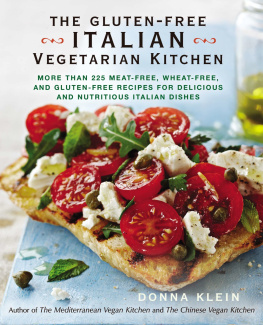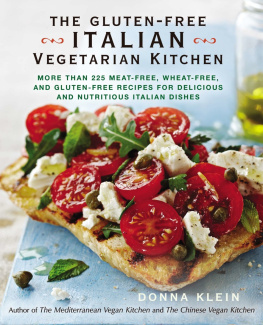
What People Are Saying About the Award-Winning Lets Eat Out!
5 out of 5 stars... simply outstanding reference
Midwest Book Review
Very informative and well-written
Kids with Food Allergies, US
You can eat out and enjoy itthanks to these invaluable reference tools for safe gluten-free and allergen-free eating
American Celiac Disease Alliance
Invaluable resources and comprehensive guides for eating out whether at home or abroad
Allergic Living Magazine
Aids both consumers and food service staff in better collaborating on dealing with allergies and the likelihood of more arising
Food Service Magazine
Makes you hungry and gives you the power to protect yourself from food allergies at the same time
BookReview.com
Extremely helpful... great reference tool for families
Food Allergy Initiative
GlutenFree Passport, AllergyFree Passport and their logos are trademarks of AllergyFree Passport, LLC
2013 AllergyFree Passport, LLC. All rights reserved.
No part of this book may be reproduced or transmitted in any form or by any meansexcept by a reviewer who may quote brief passages in a review to be printed in a magazine, newspaper, or on the Internetwithout the express written consent from AllergyFree Passport.
Please contact for more information.
Interior photos provided by: Brand X Pictures, Digital Vision, Ingram, iStockphoto, Photodisc, Jupiter Images, Creatas Images, Getty Images, MedioImages, Shutterstock, Thinkstock Images
Published by:
Gluten Free Passport
Chicago, IL 60606
United States of America
http://www.GlutenFreePassport.com
eISBN 978-0-9829599-6-1
Gluten Free Dining in
Thai
Restaurants
Part of the Award-Winning Lets Eat Out! Series
Kim Koeller & Robert La France

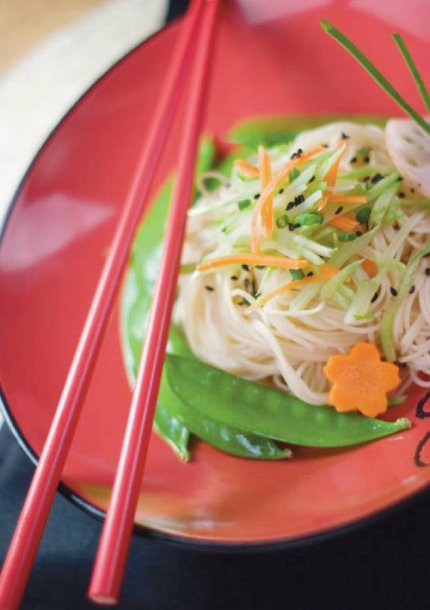
Introduction
Overview
Eating out in restaurants, at social gatherings and while traveling are key concerns for those on special diets, greatly impacting each individuals quality of life. Cutting edge global market research from AllergyFree Passport and its affiliate GlutenFree Passport reveals that the primary factors which influence special diet guests when eating away from home include:
- Safety of gluten-free meals
- Knowledgeable restaurant and food service personnel
- Fear of a gluten reaction
In addition, individuals are also concerned about traveling, which includes eating out in restaurants, finding snacks, flying, choosing accommodations and communicating in foreign languages. At the same time, many restaurants and travel providers around the world are expanding their gluten-free offerings due to increased customer demand.
This resource addresses these considerations and facilitates safe eating experiences by empowering individuals and businesses alike. Focused on ingredients, food preparation techniques, hidden allergens and cross-contamination, this ebook can be used as a daily resource, a reference guide, an educational tool and/or a training manual depending upon your specific perspective.

Scope and Approach
The Lets Eat Out! series includes cuisine-specific guides, such as this ebook, multi-lingual phrases, print books, applications and other ebooks as described in the Appendix.
It should be noted that celiac / coeliac disease is an auto-immune disorder with a permanent intolerance to gluten, the protein found in wheat, rye and barley. Spelled celiac in North America and coeliac throughout the rest of the world, it can only be treated and controlled by the strict adherence to a 100% gluten-free diet. In addition, some individuals managing food allergies may be at risk to anaphylaxis which is a life threatening condition requiring immediate medical attention.
This award-winning series provides easy-to-use resources that are succinct and flexible to meet the various readers needs. The scope is the result of years of extensive global market research, consultations, analysis and personal experiences. The content approach and structure are based upon focus group testing/feedback by hundreds of individuals impacted by gluten-free diets, in-depth hospitality industry assessments and proven results with safe eating experiences worldwide.
The content of this ebook encompasses Thai restaurant cuisine which can be found in many cities and countries around the world. This innovative initiative focuses on what can be safely eaten when ordering meals in Thai restaurants based upon a cuisine-specific approach.
The restaurant cuisine details suggested dishes, meal descriptions and potential food allergen considerations. To determine the menu items provided in this ebook, thousands of menus and recipes from all over the world were researched to identify which items were most commonly found in Thai restaurants. Once established, each was then reviewed to determine which had the highest likelihood of being gluten and wheat-free. Then, ingredients, food preparation techniques, hidden allergens and cross-contamination concerns were defined for each menu item.
To ensure accuracy, rigorous quality assurance testing was also conducted with chefs, restaurants and culinary schools worldwide to confirm each of the descriptions, considerations and traditional/non-traditional culinary practices.
Other sections of the book focus on additional eating out guidelines including the proven guest and restaurant approach to safe eating experiences, the learning curve for special diets and the collaborative process.
Armed with the critical questions to ask, appropriate knowledge and preparation checklists, you now have the opportunity and freedom to safely eat in any Thai restaurant.
At the same time, eating establishments can ensure that potentially problematic ingredients, preparation techniques and cross-contamination concerns are addressed when preparing and serving special diet guests.
Design and Methodology
Sold in 50-plus countries, this innovative series reflects the collaborative efforts of hundreds of individuals and organizations around the world. The ebook chapters are categorized into the following areas for your reference.
Thai Restaurant Cuisine Chapters
The cuisine chapters highlight the following:
Gluten Awareness details the areas of food preparation that must be considered for gluten-free meals. These areas of food preparation are explained in detail and a series of requests are presented to help simplify the ordering process.
Allergen Considerations identify potential sources of hidden food allergens that may be present based upon both traditional and non-traditional culinary practices. There are many reasons why restaurants may incorporate non-traditional culinary practices into their cuisine. Lack of availability, associated costs of importing special ingredients and regular customers preferences can influence an establishments approach to cooking.


